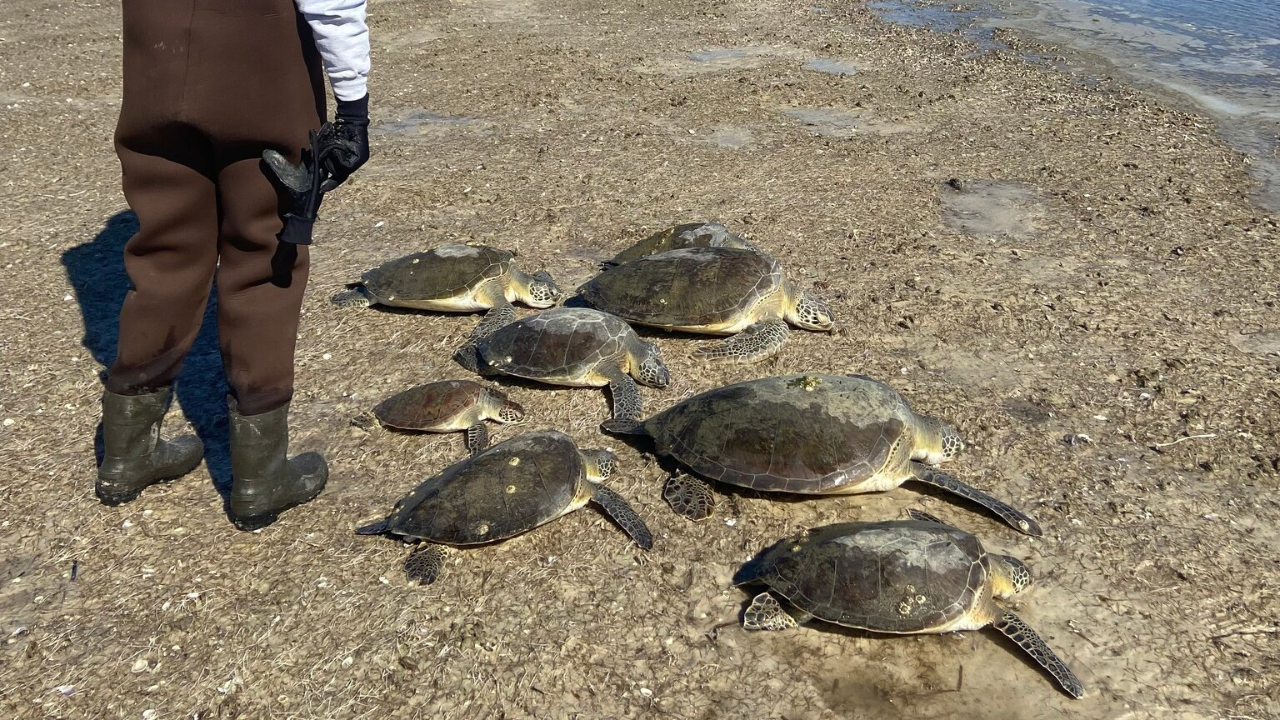Race Day Live As temperatures in the Atlantic Ocean drop into the 50s, sea turtles near Florida are struggling to survive.
The sudden cold has left many of them in a state called “cold stunning,” where they become too weak to move.
This happens because turtles are cold-blooded and cannot control their body temperature. If the water gets too cold too fast, their bodies slow down, making them float helplessly on the surface.
Recently, Mote Marine’s Sea Turtle Rehabilitation Hospital received 22 juvenile green turtles suffering from this condition.
Usually, most cold-stunned turtles are found near New England, but this time, they are appearing off Florida’s coast. This unusual event has raised concerns among experts.
When turtles become cold-stunned, they are at serious risk. They can be hit by boats, attacked by predators, or suffer from infections and frostbite.
To help them, the Florida Fish and Wildlife Conservation Commission (FWC) and other rehabilitation centers are working together to rescue and treat the affected turtles.
Mote’s rehabilitation hospital had been closed for four months due to hurricane damage but reopened to provide emergency care. Kathryn Gentile, a spokesperson for Mote, emphasized how important every turtle is to the environment.
Read More:
- Florida’s New Law Allows C-Sections Outside Hospitals, Raising Safety Concerns!
- Governor Ron DeSantis Forms Florida’s Advisory Commission for America’s 250th Anniversary!
Once turtles arrive at the center, experts examine them and create treatment plans to help them recover.
Every year, rescued turtles receive themed names to help staff track them after their release. This year’s theme is birds, with turtles named Owl, Raven, Bluejay, Finch, and Crow.
At the center, they are slowly warmed up, with their water temperature increasing by 3 to 4 degrees per day until it reaches a safe 79 to 80 degrees.
During their recovery, the turtles are fed a diet of fish, squid, shrimp, lettuce, and seagrass. Experts closely watch their movements to make sure they can lift their heads to breathe and regain the use of their flippers.
Most turtles stay at the rehabilitation center for about a month before they are released back into the ocean.
So far, more than 1,200 sea turtles have been rescued during this year’s cold stunning season. The last time Florida saw a major cold-stunning event was in 2010 when over 5,000 turtles were affected. While this year’s numbers are not as high, the situation off Florida’s east coast is concerning.
“This does happen every few years, but it’s unique,” Gentile said.
Disclaimer- Our team has thoroughly fact-checked this article to ensure its accuracy and maintain its credibility. We are committed to providing honest and reliable content for our readers.

